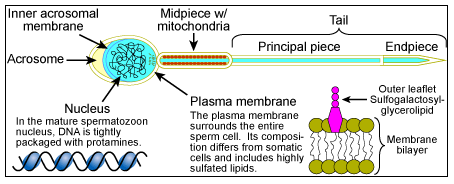Archival Notice
This is an archive page that is no longer being updated. It may contain outdated information and links may no longer function as originally intended.
Home | Glossary | Resources | Help | Contact Us | Course Map
Step Two: Denaturation and Hydrolysis of Proteins
Cells are lysed using a detergent, Proteinase K, and dithiothreitol (DTT). Extractions must use appropriate salt concentration and pH to ensure that proteins and other contaminants are separated into the organic phase and that DNA remains in the aqueous phase.
Detergents, which are included in the stain extraction buffer, have the following functions:
- They lyse cell membranes.
- They separate histone proteins from DNA.
- They denature histone proteins.
- They destroy secondary and tertiary structures of proteins, which decreases their solubility in aqueous solution.
Proteinase K is used to hydrolyze histone proteins and is well suited to the extraction process for the following reasons:
- It is active over a wide pH range (4-12.5).
- It is active in the presence of SDS.
- It is not affected by EDTA.
Dithiothreitol (DTT) reduces disulfides to dithiols, allowing release of the DNA from its protective proteins and further degradation of the proteins by Proteinase K. DTT is an essential component for sperm cell lysis because the cell membrane contains a high concentration of disulfides.06
- Detergents
Sarkosyl is generally used if a lysis procedure is conducted under refrigerated conditions (less than room temperature) because sodium dodecyl sulfate (SDS) precipitates out of solution at these temperatures. SDS is the detergent of choice when lysis procedures are conducted at room temperature.
- Proteinase K
Proteinase K is produced by the fungus Tritirachium album Limber. It is an endolytic protease that cleaves peptide bonds at the carboxylic sides of aliphatic, aromatic, or hydrophobic amino acids. Proteinase K is classified as a serine protease. Proteinase K in the extraction buffer inactivates nucleases and aids in lysis of epithelial and white blood cells to free nuclear DNA. Nuclease inactivation is a very important step in DNA isolation. Nucleases naturally exist in the cell to break down the nucleic acids after they serve their functions in protein manufacture, thus allowing the individual building blocks of the DNA and RNA to be recycled by the cell. Inactivating these nucleases preserves the DNA so that it can be extracted and purified.06
- DTT
DTT Construction. The DTT reduces disulfides to dithiols, allowing release of the DNA from its protective proteins and further degradation of the proteins by Proteinase K.
Additional Online Courses
- What Every First Responding Officer Should Know About DNA Evidence
- Collecting DNA Evidence at Property Crime Scenes
- DNA – A Prosecutor’s Practice Notebook
- Crime Scene and DNA Basics
- Laboratory Safety Programs
- DNA Amplification
- Population Genetics and Statistics
- Non-STR DNA Markers: SNPs, Y-STRs, LCN and mtDNA
- Firearms Examiner Training
- Forensic DNA Education for Law Enforcement Decisionmakers
- What Every Investigator and Evidence Technician Should Know About DNA Evidence
- Principles of Forensic DNA for Officers of the Court
- Law 101: Legal Guide for the Forensic Expert
- Laboratory Orientation and Testing of Body Fluids and Tissues
- DNA Extraction and Quantitation
- STR Data Analysis and Interpretation
- Communication Skills, Report Writing, and Courtroom Testimony
- Español for Law Enforcement
- Amplified DNA Product Separation for Forensic Analysts



